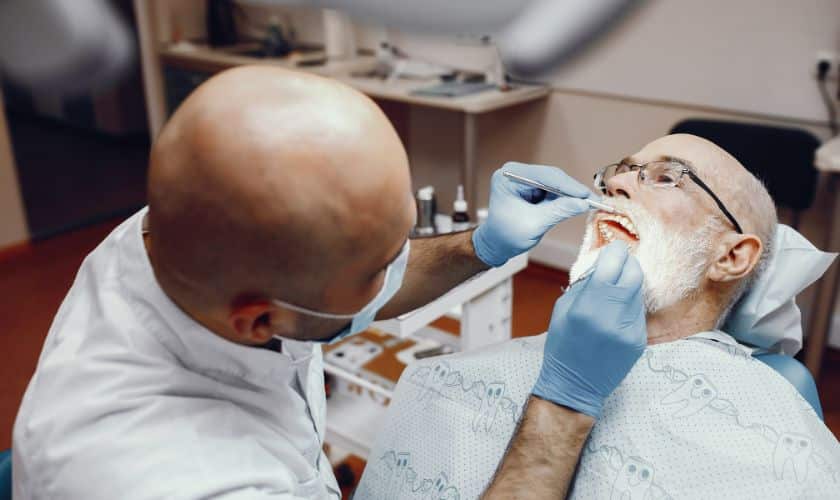In the realm of modern dentistry, dental implants stand as a beacon of innovation, offering a transformative solution for those grappling with the challenges of missing teeth. While the idea of dental implantation may seem daunting, understanding the step-by-step procedure can demystify the process and empower individuals to make informed decisions about their oral health. From the initial consultation to the final restoration, this comprehensive guide aims to unravel the intricacies of dental implant surgery, shedding light on the path to a revitalized smile and renewed confidence. Join us on this exploration as we navigate the journey of dental implants, uncovering the science, precision, and artistry that combine to create a lasting, natural-looking solution for tooth loss.
I. Understanding Dental Implants
What Are Dental Implants?
Dental implants are artificial tooth roots surgically implanted into the jawbone, providing a stable foundation for replacement teeth. They offer a durable and natural-looking solution for individuals with missing teeth or those seeking an alternative to traditional dentures.
Types of Dental Implants:
- Endosteal Implants: Placed directly into the jawbone, these are the most common type of dental implants.
- Subperiosteal Implants: Positioned on top of the jawbone but beneath the gum tissue, these implants are suitable for patients with insufficient natural bone height.
II. The Consultation and Treatment Planning
Initial Assessment:
The journey begins with a thorough examination and assessment of the patient’s oral health. X-rays and 3D scans help dentists evaluate the condition of the jawbone and determine the feasibility of dental implant placement.
Customized Treatment Plan:
A customized treatment plan is developed in accordance with the assessment. This plan outlines the number of implants needed, the type of restoration (crown, bridge, or denture), and the overall timeline for the procedure.
III. Dental Implant Surgery
Anesthesia and Incision:
To guarantee the patient’s comfort on the day of the procedure, local anesthesia is given. The dentist then makes an incision in the gum to expose the jawbone, creating a space for the implant.
Implant Placement:
Using precision and guided by the treatment plan, the dentist carefully places the dental implant into the jawbone. This marks the beginning of the osseointegration process, where the implant fuses with the surrounding bone.
Temporary Restoration:
In some cases, a temporary crown or restoration may be attached to the implant during the healing period. This temporary solution maintains functionality and aesthetics while the implant integrates with the bone.
IV. Osseointegration and Healing
Integration Process:
Osseointegration is a crucial phase where the bone and implant bond. This process typically takes several weeks to a few months, ensuring a strong and stable foundation for the final restoration.
Post-Operative Care:
Patients receive post-operative care instructions to facilitate a smooth recovery. This includes guidelines on oral hygiene, dietary restrictions, and any necessary medications to promote healing and prevent infection.
V. Abutment Placement
Uncovering the Implant:
Once osseointegration is complete, a minor surgical procedure is performed to uncover the implant and attach a small connector called an abutment. The final restoration and the implant are connected by the abutment.
VI. Final Restoration
Impressions and Customization:
Dental impressions are taken to create a customized crown, bridge, or denture that perfectly matches the patient’s natural teeth in color, shape, and size.
Attaching the Final Restoration:
The final step involves attaching the meticulously crafted restoration to the abutment. This marks the completion of the dental implant procedure, leaving the patient with a fully restored and aesthetically pleasing smile.
VII. Post-Procedure Follow-Up
Regular Check-ups:
Regular follow-up appointments are scheduled to monitor the implant’s stability and the overall health of the surrounding tissues. These check-ups ensure the long-term success of the dental implant.
Long-term Care:
Maintaining oral hygiene and attending regular dental visits is crucial for the longevity of dental implants. With proper care, dental implants can last a lifetime, offering a permanent and reliable solution for missing teeth.
Dental implants have revolutionized the field of restorative dentistry, providing a lifelike and durable solution for individuals seeking to reclaim their smiles. By demystifying the step-by-step process, we hope to empower individuals with the knowledge needed to make informed decisions about their oral health. If you’re considering dental implants, consult with a qualified dentist to embark on a personalized journey towards a confident and fully restored smile.



